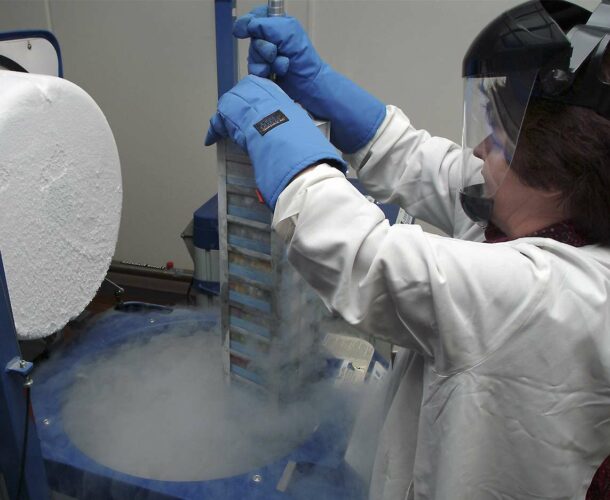Researchers show how the immune system recognises and responds to parasite proteins. They develop the first parasite-specific monoclonal antibodies for detecting and diagnosing parasitic infections. This leads to successful development of a diagnostic test for schistosomiasis.
Among the research team is Kathleen Davern, who becomes a pioneer in antibody cloning for scientific research and drug treatment.
Training ground in the Philippines
In a 35-year career at the institute, Kathy Davern progressed from junior to senior technician to a managerial role. She had a range of supervisors and mentors— the most influential being Dr Graham Mitchell.
“He was the making of me,” says Davern of the institute’s immunologist-cum-parasitologist. “We used to go to the Philippines together every year for a month.”
In the Philippines, Davern and Mitchell investigated the parasitic worm that causes schistosomiasis, a chronic infectious disease endemic in tropical and sub-tropical areas.
“We were learning how to purify eggs from the faeces of infected animals, and sometimes humans, so we could analyse the proteins in the parasite.”
Their great hope was to lay the groundwork for a malaria vaccine. This did not materialise— largely because parasites are notoriously adaptable in the face of new drugs and therapies— but Davern and Mitchell were successful in developing a diagnostic test for schistosomiasis.
A talent for antibody production
Davern was also highly successful in synthesising antibodies. An antibody, a blood protein that binds to and destroys ‘foreign’ invaders such as bacteria or viruses, is “like a spanner,” Davern explains.
“It only fits on a certain nut. So if you have a parasite you want to study you can make antibodies to different molecules of the parasite.”
The process entails injecting the parasite into mice so they’ll produce antibodies, harvesting the antibody-producing immune cells from the mouse’s spleen and producing the antibodies in the lab.
Breakthrough discovery
A series of discoveries helped Davern perfect the technique. She and her colleagues had been producing antibodies to a range of worm antigens, or proteins. One of these was found to be a protein known as Glutathione-S-transferase (GST). It was later discovered that GST could bind to a small peptide, GSH, which could be attached to beads. This paved the way for a new method to more easily isolate and purify proteins in the lab.
“Everyone in the world was working on this because it was so hard to isolate and purify proteins. Now we could make them about 90 per cent pure, without contamination from other molecules. And if you have a purified protein, you can see how it affects other molecules or cells, so you can investigate if it is involved in cancer or infectious diseases or whatever. The method has been commercialised; people are still using it.”
Building better facilities
In 2001 Davern established the institute’s monoclonal antibody facility at its Bundoora campus. She produced antibodies for cancer cell proteins, malaria proteins and molecules involved in diabetes, servicing laboratories around the country.
In 2005 Davern shifted to what’s now the Harry Perkins Institute of Medical Research in WA, with her husband Professor Grant Morahan, also an institute alumnus. She established and manages that institute’s Monoclonal Antibody Facility and recently helped design and commission two new institute buildings in Perth worth more than $150 million.




